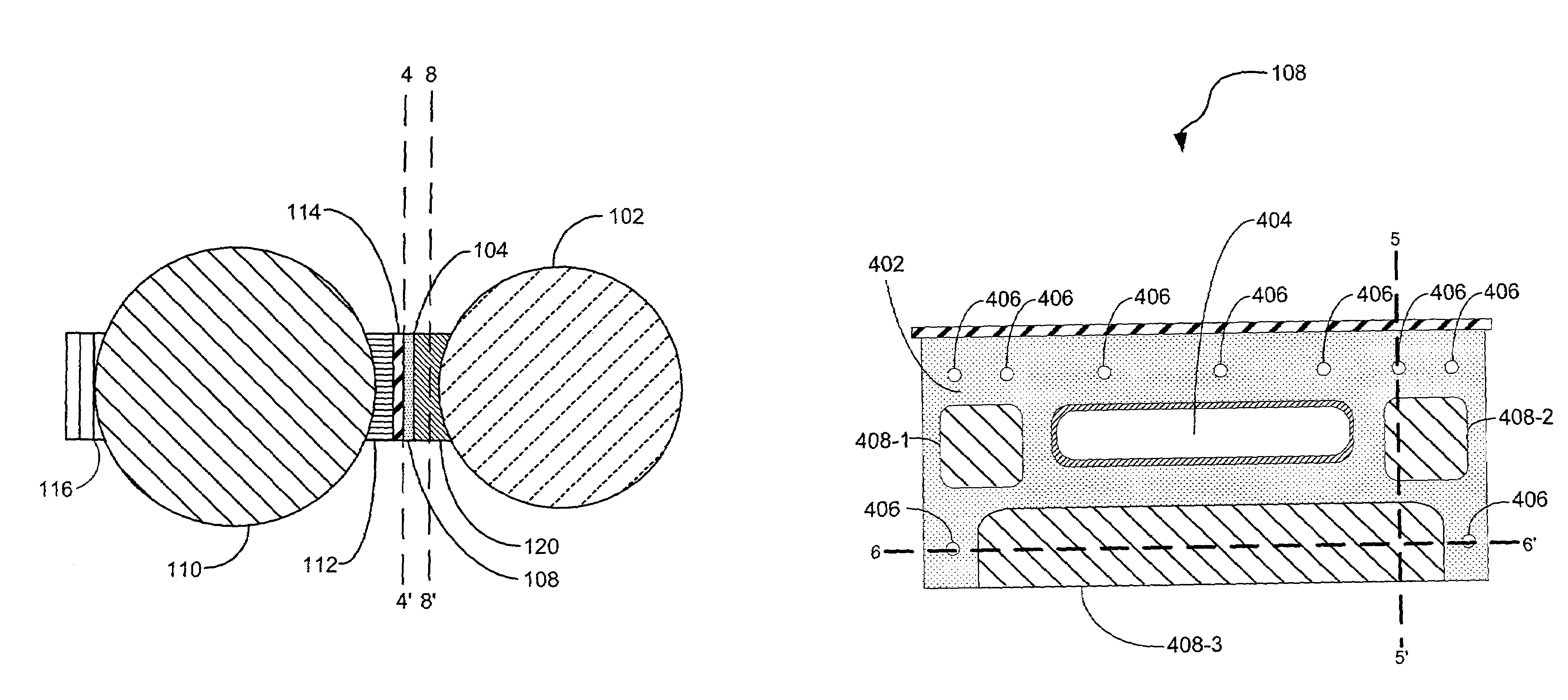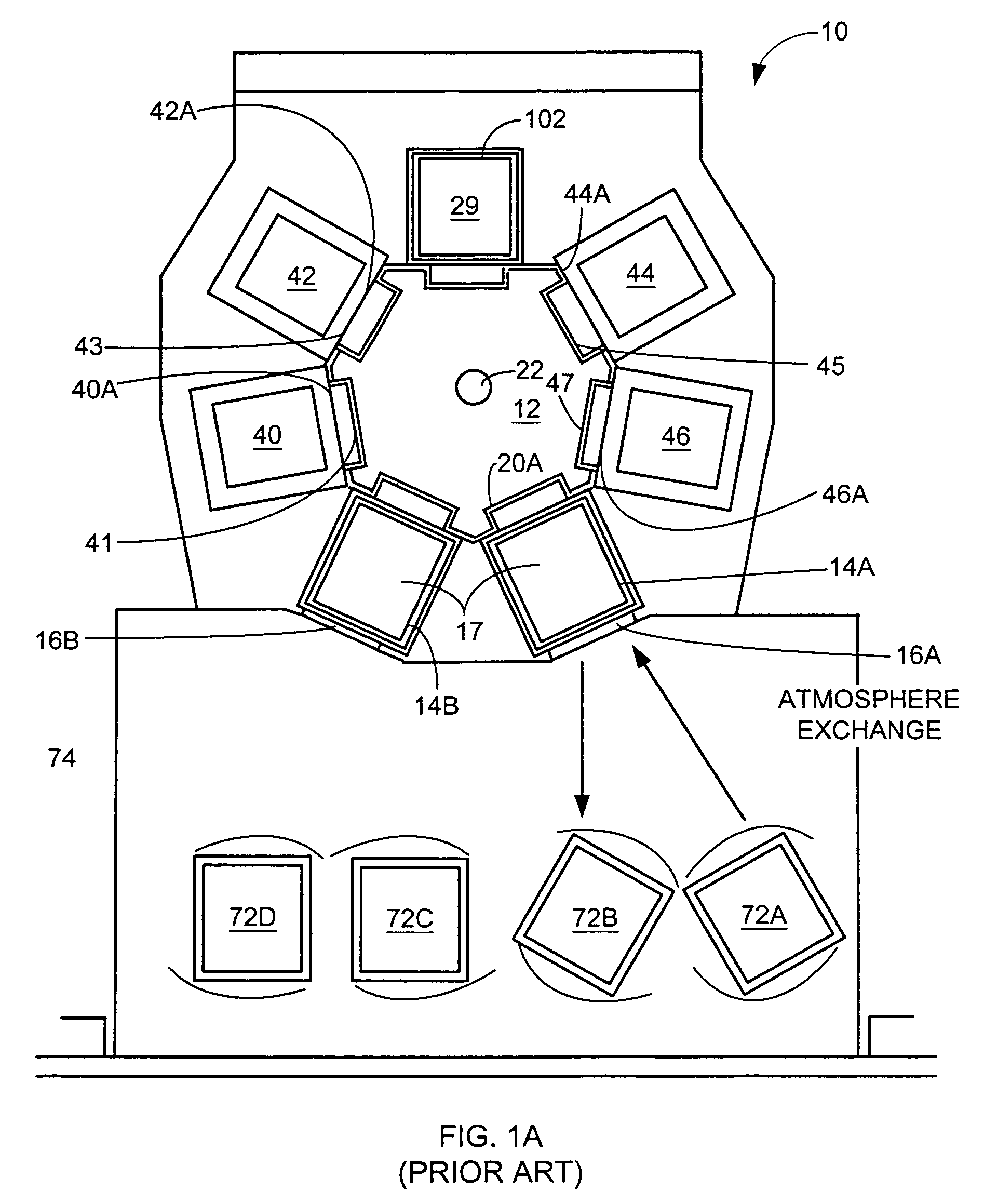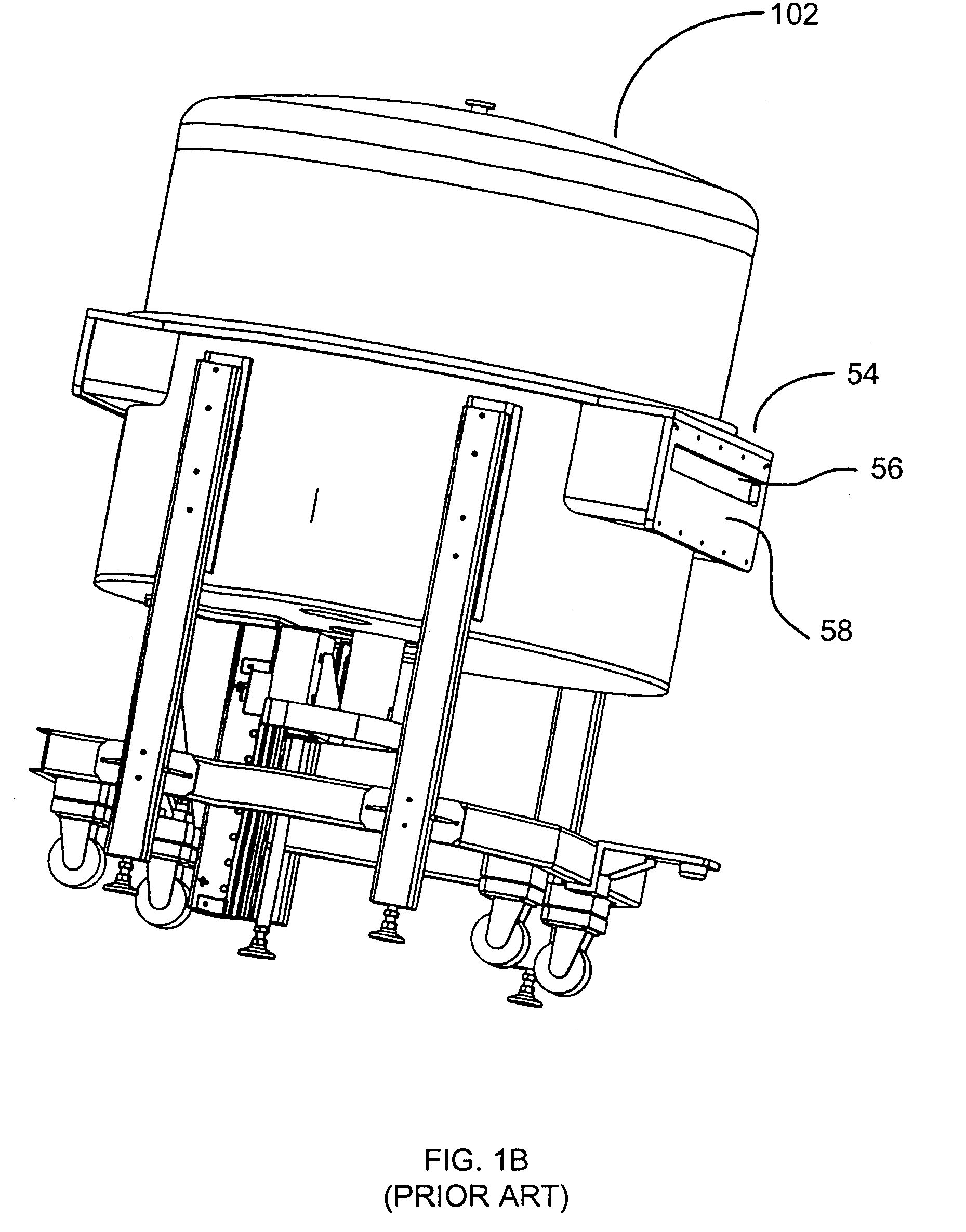Apparatus and method for thermally isolating a heat chamber
a technology of thermal isolation and apparatus, which is applied in the direction of lighting and heating apparatus, charge manipulation, furniture, etc., can solve the problems of reducing the heat transfer rate, reducing the thermal conductivity coefficient, and individual defective devices cannot be removed, so as to reduce the amount of heat, and reduce the effect of thermal conductivity
- Summary
- Abstract
- Description
- Claims
- Application Information
AI Technical Summary
Benefits of technology
Problems solved by technology
Method used
Image
Examples
Embodiment Construction
[0039]The present invention provides an improved apparatus for connecting two chambers in a closed environment. The improved apparatus minimizes heat transfer from the two chambers by including an improved interface. In some embodiments of the present invention, the improved interface is made of a material that has a reduced thermal conductivity coefficient. In other embodiments of the present invention, the interface includes one or more recesses so that the surface area between the interface and the second chamber is minimized. This surface area minimization reduces the amount of thermal energy that is transferred to the second chamber. In still other embodiments of the present invention, the apparatus includes a heating device to prevent heat loss near the aperture to the second chamber.
[0040]FIG. 1B discloses a conventional heat chamber 102 with a prior art apparatus 54 including a hole 56 through which substrates are passed between the conventional heat chamber 102 and a second...
PUM
| Property | Measurement | Unit |
|---|---|---|
| pressure | aaaaa | aaaaa |
| temperatures | aaaaa | aaaaa |
| temperatures | aaaaa | aaaaa |
Abstract
Description
Claims
Application Information
 Login to View More
Login to View More - R&D
- Intellectual Property
- Life Sciences
- Materials
- Tech Scout
- Unparalleled Data Quality
- Higher Quality Content
- 60% Fewer Hallucinations
Browse by: Latest US Patents, China's latest patents, Technical Efficacy Thesaurus, Application Domain, Technology Topic, Popular Technical Reports.
© 2025 PatSnap. All rights reserved.Legal|Privacy policy|Modern Slavery Act Transparency Statement|Sitemap|About US| Contact US: help@patsnap.com



